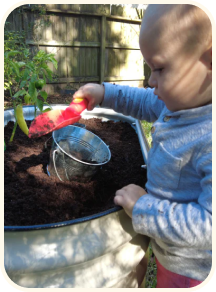Wonderful Windowsill Gardens: Small Pots, Low Maintenance, Big Results
If you love flowers but you live in an apartment, or if you haven’t got much available yard space, or if you’ve just got a bit of a brown thumb, a windowsill garden might be the perfect way to add some greenery and style to your home.
Windowsill gardens are simply a collection of plants that you can grow in a windowsill, either indoors or in a hanging box outside the window. These small gardens are often more successful than traditional yard gardens, and they’re also a great way to start off seedlings.
A very simple beginner’s option could be to start a windowsill herb garden, which you can buy in a kit. But if you’d like something more decorative to spruce up the room, or if you prefer to grow plants that bloom, here are some tips to begin.
Start your windowsill garden

- Choose a windowsill that gets at least five hours of direct sunlight each day. Plan out your space. Windowsills are generally small, so be sure there’s enough for your plant to grow. Kitchen windows make for great windowsill gardens, as do many bay windows.
- Decide what you’d like to grow. Is it herbs or vegetables? Or succulents or flowers? Perhaps a combination? Research what can be grown in the same container. Not all plants can grow together.
- Find containers that work in the space you have chosen. Clay pots or an outdoor window box will be fine, just be sure the containers have drainage holes.
- Choose the correct soil. Most window gardens grow best in potting mix, with lots of organic matter. You can stir in your own compost if you’ve got it.
- Decide whether you’d like to grow from seeds, or from seedlings. Plant accordingly.
- Be sure to water the plants and occasionally prune or harvest them so the container in which the plant is growing doesn’t get overcrowded.
How does your garden grow?
Whether you’d like to use your windowsill garden to grow herbs and vegetables to add freshness and flavor to your cooking, or if you’d like to add bloom and color to your windowsill, consider choosing plants that belong to the same biome—meaning, plants that generally grow in the desert, or in the rainforest. When you organize your garden in this way, you’ll create a cohesive garden with similar sunlight, water and fertilizing needs.
Spice up your cooking
You don’t need to have a big backyard to grow basil, parsley, or other herbs and vegetables. You can grow them yourself, without even venturing outdoors or going to the grocery store. Imagine taking a pair of scissors, and a few quick snips later, adding your own fresh herbs to your homemade salad dressing, tomato sauce, or guacamole.
- Herbs like basil, oregano, rosemary and mint, as well as allium vegetables (garlic, leeks, shallots, onions) are a fundamental part of many recipes and there’s nothing better than adding your own home-grown ingredients to your dish
- Small-root vegetables like parsnips, beets, and carrots are worth growing in a windowsill with enough sunlight, water, and enough potassium and phosphorus in the soil
- Microgreens are small seedlings of herbs and vegetables that can grow very close together and maximize your crop yield in a small container. Other leafy vegetables like lettuce also do well in containers.
- Legumes like bush beans and pole beans can grow well indoors, if the container is big enough—at least 15 inches in diameter, with enough space for them to grow.
Short on space? Houseplants on the windowsill add color and character

Growing flowers isn’t just for the outdoors. Bringing flowering plants to your windowsill can enhance your interior and isn’t too much fuss. And best of all, the season doesn’t matter. Windowsill gardens are year-round.
- Begonias: Rex and Angel Wing are known for their bright pops of colorful foliage.
- Cape primrose: Related to the African violet, this pretty, blooming plant can be grown even in windowsills that do not receive full sun.
- African violet: Available in pink, purple and white, this little beauty is brought to bloom easily on the windowsill. They do not need full sun, and they can be bottom-watered, from the saucer beneath the pot.
- Kalanchoe: This pink, vibrant plant will bloom continually in full sun. It likes a lot of water, but it needs to dry out completely between waterings.
- Cacti and succulents: These are excellent for the windowsill, and even better for those who have slightly brown thumbs. They tolerate neglect well, they stay small, and there are many choices depending on your space.
Generally, windowsill gardens are low maintenance and only need weekly watering and the proper amount of sunlight. They’re also great reminders that we can all grow wherever we’re planted. These gardens are an easy, enjoyable activity that offer nutrition, greenery and personality to your space.





























I’m trying to apply my 1756 reward points to my order for the rolling self-watering planter, but not having any success.
looking forward to planting with you.
I love the point of growing plants that like the same soil and sun, Thank you!
Leave a comment